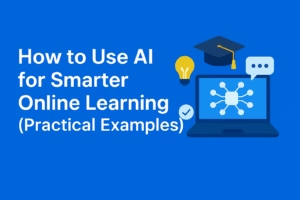Best SaaS Startups to Watch in 2026
I’ll be upfront with you—predicting which specific SaaS startups will dominate 2026 is tricky business. The startup landscape changes faster than you can refresh your LinkedIn feed. Companies that seem promising today might pivot tomorrow, while startups that haven’t even launched yet could become the next unicorns.
But here’s what I can tell you with confidence: the SaaS industry isn’t just booming—it’s exploding in very specific directions. And understanding these trends will help you identify the next generation of game-changing companies, whether you’re an investor, entrepreneur, or just someone fascinated by innovative technology.
Let me share what’s actually happening in the SaaS world right now and where the smartest money is flowing.
Why SaaS Startups Are Thriving in 2026
The SaaS revolution isn’t slowing down—it’s accelerating. And there are some very concrete reasons why.
The remote-first work culture that emerged from recent global shifts has become permanent for many organizations. This isn’t just about video calls anymore; it’s fundamentally changed how businesses operate. Companies now need cloud-based tools for everything from collaboration to customer management, and they need them to work seamlessly across continents and time zones.
The economics are compelling too. Micro-SaaS startups are achieving profit margins up to 80% thanks to their low overhead and specialized focus. Compare that to traditional software companies with their massive infrastructure costs and complex distribution channels. SaaS companies can launch with a laptop and an AWS account.
AI has moved from buzzword to backbone. By 2026, more than 80% of companies are expected to have deployed AI-enabled apps in their IT environments, up from just 5% in 2023. This isn’t incremental change—it’s a fundamental shift in what software can do.
There’s also a growing appetite for niche solutions. The days of one-size-fits-all software are fading. Businesses want tools built specifically for their industry, their workflow, their exact problem. This creates opportunities for startups that can deeply understand and serve specialized markets.
Categories of SaaS Startups Dominating 2026
Rather than listing specific companies that might not exist or might have pivoted by the time you read this, let me show you the categories where innovation is exploding. These are the areas attracting the most funding, talent, and user interest.
AI-Powered Workflow Automation
This is where the action is right now. SaaS startups like Univerbal, Vocode, Vizcom, and HiPeople heavily rely on AI technologies to enhance their core features and create great user experiences.
The companies winning in this space aren’t just slapping AI onto existing features. They’re building tools that genuinely understand context, learn from user behavior, and automate tasks that previously required human judgment.
Think beyond simple chatbots. We’re talking about systems that can analyze your team’s communication patterns and suggest process improvements, tools that automatically prioritize your task list based on deadlines and dependencies, and platforms that generate entire workflows from natural language descriptions.
For solopreneurs and small teams, this is game-changing. Tasks that used to require hiring specialists—like customer segmentation, content optimization, or data analysis—can now be handled by AI-powered tools at a fraction of the cost.
Personalized Learning and Education Technology
The education technology sector is experiencing a renaissance, and it’s not just about putting textbooks online anymore. AI-powered adaptive learning platforms are creating truly personalized educational experiences.
These platforms analyze how individual students learn—which types of explanations work best, when they tend to lose focus, which concepts they’re struggling with—and adjust in real-time. It’s like having a personal tutor who knows exactly how your brain works.
Professional development platforms are particularly hot right now. With skills becoming obsolete faster than ever, professionals need continuous learning solutions that fit into busy schedules and focus on immediately applicable skills.
The global reach of these platforms is remarkable. Students and professionals worldwide are accessing high-quality education that adapts to their learning pace, available 24/7, often at prices dramatically lower than traditional alternatives.
Remote Collaboration Beyond Video Calls
Video conferencing solved one problem of remote work, but it created others. Zoom fatigue is real, and asynchronous collaboration across time zones remains challenging.
The next generation of collaboration tools is addressing this. They’re combining project management, communication, document collaboration, and knowledge management into unified platforms that actually understand how distributed teams work.
These aren’t just feature additions to existing tools. They’re fundamentally rethinking how teams coordinate work, make decisions, and maintain culture when they’re never in the same physical space.
Startups and freelancers are particularly drawn to these solutions because they eliminate the need to stitch together five different tools with Zapier and hope everything works.
AI for E-commerce and Revenue Growth
E-commerce tools have been around forever, but AI is transforming what’s possible. Promising niches often include ecommerce tools—platforms for online store management and payment processing.
The most innovative startups in this space are using AI to predict customer buying patterns with scary accuracy. They analyze browsing behavior, purchase history, market trends, and even social media signals to help businesses understand not just what customers bought, but what they’re about to buy.
Small businesses particularly benefit from these tools. Capabilities that previously required enterprise-level budgets and data science teams are now available through affordable SaaS subscriptions.
We’re seeing tools that automatically optimize pricing based on demand, create personalized product recommendations for each visitor, and predict inventory needs with precision that reduces both stockouts and overstock.
Healthcare and Telemedicine Solutions
Healthcare Technology including EHR, telemedicine, and healthcare admin solutions represents one of the most promising SaaS niches.
The telemedicine boom that started during recent health crises has matured into sophisticated platforms that go far beyond simple video consultations. Modern healthcare SaaS includes AI-powered diagnostic assistance, automated appointment scheduling, integrated health monitoring, and comprehensive patient management systems.
These platforms are gaining particular traction in markets like India and Southeast Asia, where they’re solving critical access problems. Patients in remote areas can now consult with specialists, receive AI-assisted preliminary diagnoses, and manage chronic conditions through their smartphones.
The integration of wearable device data with telemedicine platforms is creating continuous care models that were impossible before. Your smartwatch data flows directly into your health records, alerting your doctor to potential issues before you even notice symptoms.
Smart Finance and Accounting Tools
Financial management software isn’t new, but AI is making it dramatically more intelligent and accessible. Modern finance SaaS goes beyond simple expense tracking or invoicing.
These platforms use AI to categorize transactions automatically, predict cash flow issues before they become critical, suggest tax optimization strategies, and even negotiate better rates with vendors based on market analysis.
For small and medium businesses, these tools are budget-friendly alternatives to traditional accounting software and expensive bookkeepers. They’re designed for business owners who aren’t financial experts but need sophisticated financial insights.
The automation of repetitive accounting tasks is freeing up finance teams to focus on strategic analysis rather than data entry. AI can automate repetitious tasks like data entry and report generation, freeing up time for employees to focus on more strategic tasks.
Key Trends Defining SaaS Success in 2026
Understanding these trends will help you evaluate any SaaS startup, whether it’s on this list or launching tomorrow.
AI-First, Not AI-Added
The difference between startups that successfully leverage AI and those that just market it is profound. In 2025, we’re moving past basic automation to building AI assistants and solutions that actually make decisions, predict user needs, and improve efficiency without manual input.
Successful companies build AI into their core architecture from day one. It’s not a feature layer on top of traditional software—it’s the foundation of how the product works.
The Micro-SaaS Revolution
The most exciting startups aren’t trying to be everything to everyone. They’re laser-focused on solving one specific problem extraordinarily well for a clearly defined audience.
Micro-SaaS startups’ ability to serve niche markets with tailored solutions allows them to operate efficiently and scale rapidly without large teams. A solo founder or small team can build a profitable SaaS business serving a specific industry vertical or use case.
This trend is democratizing entrepreneurship. You don’t need venture capital to build a successful SaaS company anymore—you need deep understanding of a specific problem and the skills to solve it elegantly.
Security as a Core Feature, Not an Afterthought
Almost 23% of cloud security incidents result from misconfigured access settings, making security a critical differentiator for SaaS startups.
Users are increasingly sophisticated about data privacy and security. Startups that treat security as a marketing checkbox rather than a fundamental design principle are losing customers to competitors who take it seriously.
The best companies are building security into every layer of their product, obtaining relevant certifications early, and being transparent about their security practices.
Affordable and Transparent Pricing
The days of “contact us for pricing” and hidden fees are ending. Modern SaaS buyers expect transparent, straightforward pricing that scales with usage.
Successful startups are offering generous free tiers to let users try before committing, clear upgrade paths as needs grow, and pricing that aligns with the value delivered rather than arbitrary seat counts or feature gates.
How to Identify Promising SaaS Startups
Since the startup landscape changes constantly, here’s how to evaluate companies yourself:
Look for real problem-solving. The best startups emerge from founders who experienced a problem firsthand and built a solution. Be skeptical of solutions looking for problems.
Check the team’s expertise. Do the founders deeply understand the industry they’re serving? Have they built and scaled products before? Domain expertise matters more than generic startup experience.
Examine user engagement, not just user counts. A SaaS company with 1,000 highly engaged daily users is more promising than one with 100,000 signups who never return.
Follow the funding, but don’t worship it. Venture capital validates market potential, but some of the most successful SaaS companies are bootstrapped. What matters is sustainable unit economics.
Pay attention to customer retention. SaaS businesses live or die by retention rates. A company with 95% annual retention is probably solving a real problem well.
The Reality Check
Let me be honest about something that often gets glossed over in articles like this: most startups fail. Even promising ones with great funding, smart teams, and innovative products.
The SaaS market is also getting crowded. For every problem, there are often dozens of solutions. Simply having a good product isn’t enough—you need exceptional execution, timing, and often a bit of luck.
In 2025, the SaaS industry is moving toward collaboration between humans and AI systems, marking a shift from AI as a standalone tool to AI as a co-worker. This means the bar for what constitutes innovative AI integration keeps rising.
What This Means for You
If you’re an investor, focus on categories with strong tailwinds and teams with domain expertise. The most promising opportunities are often in boring industries being transformed by modern technology rather than sexy consumer apps.
If you’re an entrepreneur, the micro-SaaS model offers the most accessible entry point. Find a specific problem you understand deeply, build a focused solution, and grow organically. You don’t need to raise millions to build a profitable SaaS business.
If you’re choosing tools for your business, prioritize platforms that solve real problems over those with impressive feature lists. The best tool is the one your team will actually use consistently.
Looking Forward
2026 will indeed be a significant year for SaaS, but not because of any specific company. It’s significant because we’re seeing the maturation of trends that will define software for the next decade: AI integration, specialized solutions for niche markets, new collaboration models for distributed teams, and accessibility of sophisticated tools for small businesses.
The startups that will dominate aren’t necessarily the ones with the biggest funding announcements or the flashiest demos. They’re the ones solving real problems efficiently, maintaining focus, and building sustainable businesses that genuinely improve how people work and live.
Keep your eye on the trends and fundamentals rather than individual companies. That’s how you’ll spot the next generation of SaaS success stories—whether they’re already launched or still being coded in someone’s apartment.
Frequently Asked Questions?(FAQ's)
AI-powered automation, personalized learning platforms, remote collaboration tools, and healthcare technology are leading the growth. E-commerce enablement and financial management tools for SMBs are also experiencing significant traction. The common thread is AI integration that genuinely improves functionality rather than serving as a marketing feature.
Yes, absolutely. The SaaS model remains highly profitable, with micro-SaaS startups achieving profit margins up to 80%. The global demand for cloud-based, flexible solutions continues to rise as more companies adopt remote-first operations. However, profitability increasingly depends on focusing on specific niches rather than trying to compete in crowded, general-purpose categories.
Micro-SaaS refers to highly focused software products that solve very specific problems for niche audiences. Unlike traditional SaaS companies that aim for broad market appeal, micro-SaaS businesses typically operate with small teams (often solo founders) and focus on sustainable profitability rather than explosive growth. They serve specialized industries or use cases with tailored solutions that larger competitors overlook.
Solopreneurs should look for AI-powered automation tools that handle repetitive tasks, integrated finance management platforms that simplify bookkeeping and tax compliance, and collaboration tools designed for small teams. The key is finding solutions that eliminate the need for hiring specialists while remaining affordable. Look for tools with generous free tiers and transparent pricing that scales with your growth.

